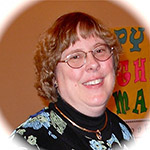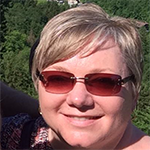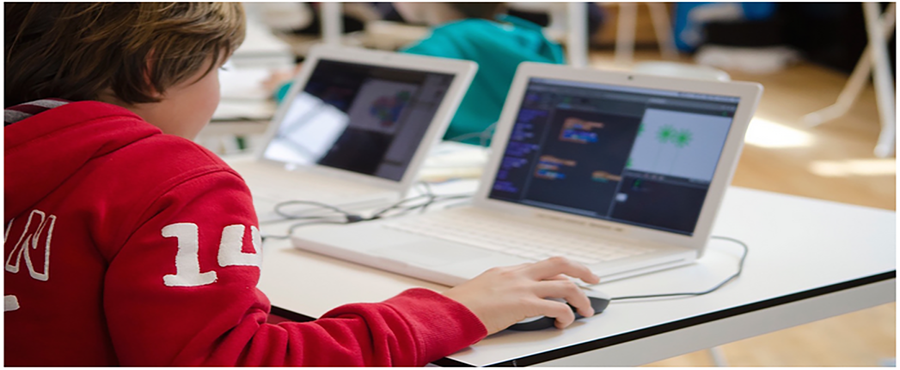Posted on September 9, 2015
Posted by Jan Snyder and Jennifer Maurer
Part II
As we wrote in Part I of this series, we feel privileged to have a very rich collection of Gale databases and eBooks at our fingertips to use with students and staff, at zero cost to us, through the Oregon State Library’s Statewide Database Licensing Program. Statewide access provides consistency for students as they move from elementary to middle school and then high school.
But the real value and power of these resources are unleashed when librarians and educators collaborate and communicate. In the second part of this blog series, we’ll discuss – from our own perspectives – communication.
(If you missed it, be sure to also read Part I — Driving Electronic Content Discovery and Usage: Collaboration.)
Jennifer
Electronic Mailing List:
While presenting about Gale databases to various audiences falls under the heading of training, it is also a form of communication. However, I also have a direct channel of communication about OSLIS and its resources, including the statewide databases. The State Library created an electronic mailing list called OSLIST. As I learn about new school library staff in Oregon, I automatically subscribe them. Through OSLIST, I share ideas for how to use the databases as well as communicate about new Gale products and features.
For example, here is a recent post about the new middle school database, Research In Context, and another one in which I list three potential uses for ReadSpeaker, Gale’s text-to-speech tool. While communicating via an electronic mailing list is not an original idea, it is effective. I stick to OSLIST’s scope and purpose and limit myself to one to four emails per month. Another way I reach a broad audience is by submitting articles for the Oregon Department of Education subject newsletters and the newsletter from the office of the superintendent. And soon we’ll experiment with placing ads about OSLIS and the statewide databases in the journals of Oregon teacher associations.
Jan
Community Venues:
I’ve had the opportunity in the last few years to share our statewide Gale resources through “Educator Week” presentations at two local Barnes & Noble stores. This gives the ability to tie databases, research, and curriculum together for teachers across many districts who attend these presentations. Often I run into teachers who are completely unaware of what is available for their use. It’s a delight to open the “magic box” of resources for them, and see their excitement to return to the classroom with new tools for helping students!
Professional Learning Communities:
I have the privilege to be part of a dynamic professional learning community (PLC) comprising librarians, both building and district level, from a large number of school districts across four counties. We meet once a month to discuss topics of interest in the world of school libraries. This PLC time gives us a unique opportunity to share, among other things, ways we are using resources with our students and teachers, and allows us the venue to stay updated with any changes, enhancements, etc., occurring in the databases. We are fortunate to have Jennifer at these meetings to help keep us informed and aware of those changes.
Individual Classroom Teachers:
In the ongoing effort to keep the digital curriculum classes current and relative, I communicate regularly with the departments or individual teachers using the CLiC classes. They either send me documents they have created to supplement the content or links to other sites or web pages they wish to add to the classes. I can then quickly link those to the appropriate digital class. This creates a true collaborative effort as it allows all teachers and students using a class to benefit as a whole from each individual’s contribution.
Opportunities are also available through teacher PLC time, or staff meetings, to work with groups of teachers to train them in the use of the various Gale resources available to us through the Statewide Database Licensing Program. This helps the teachers better organize and focus their research projects for students. They know students will be using vetted resources to accurately represent their research.
Our statewide databases and OSLIS provide a solid base to develop curriculum and greatly improve how we deliver information to our staff and students. Through use of this electronic content, in conjunction with district-purchased resources, our educational world and school libraries have become much more relevant and useful to our patrons.
[alert-info]
 About the Author
About the Author
Jan Snyder has been a librarian for more than 40 years. As district librarian of her school district over the last 25 years, she has seen many changes–most of them exciting. She has a passion for curriculum development. When not creating digital curriculum content for teachers and students or facilitating her many libraries, she loves taking pictures, reading her Nook, and working with wool appliqué.
[/alert-info]
[alert-info]
 About the Author
About the Author
Jennifer Maurer is the School Library Consultant at the Oregon State Library–not to be confused with the libraries at Oregon State University–where her primary responsibilities include working with OSLIS and the K-12 aspect of the statewide databases. Previously, Jen drove a bookmobile and was a teacher and a school librarian for a dozen years, split between Texas and Oregon. In her free time, she enjoys geocaching and traveling. This summer she was able to combine those interests by finding a geocache in Moscow’s Red Square.
[/alert-info]Air Jordan 1 Retro High OG ‘Chicago’ White and Black-Varsity Red For Sale

